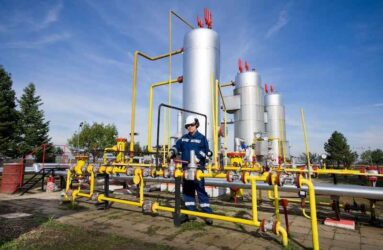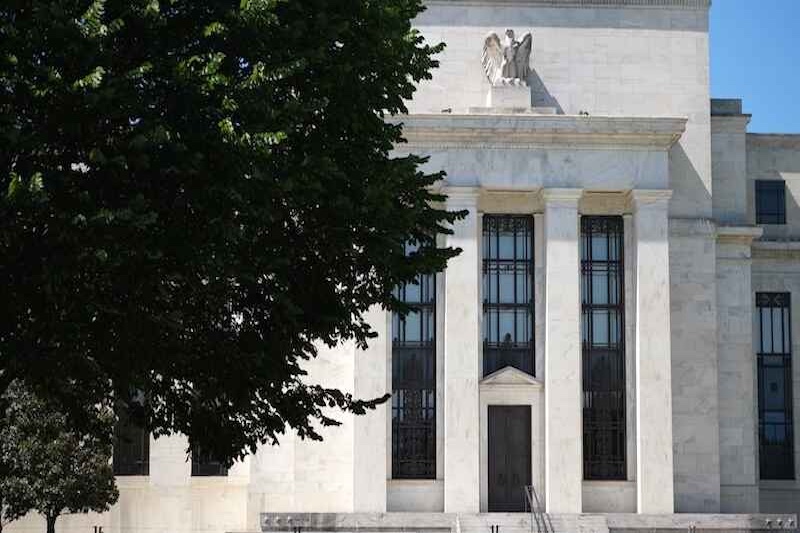Buy This, Not That: Natural Gas Will Outshine Oil in 2025
Shah Gilani|January 8, 2025

The energy sector is sending mixed signals…
Oil prices have risen about 6% from recent lows, but new drilling initiatives could flood the market.
Meanwhile, natural gas is positioned for potentially explosive growth… thanks to hungry AI data centers and a cold European winter.
So we’re looking at two ETFs that track the prices of oil and natural gas. Which ticker is a BUY?
Find out in this week’s “Buy This, Not That” video.
Click on the thumbnail to dive in. Then send me your tickers to see whether they are BUYS… or NOT. Email me at mailbag@manwardpress.com.
TRANSCRIPT
Hello, everybody. Shah Gilani here with your weekly BTNT, as in “Buy This, Not That.” I’m just coming from the Varney & Company show on Fox Business, and let me tell you, the talk was partly about what’s going on in the oil market.
WTI is rising, and natural gas prices are rising. Today’s “Buy This, Not That” is going to be about oil versus natural gas. You can play oil by using an ETF, which is a preferable way for most of us to invest in oil. USO tracks oil, so that’s what we’re going to use as our proxy.
For natural gas, we’re going to use another ETF, UNG. That’s the natural gas ETF that tracks the price of natural gas. So it’s really oil versus natural gas. Let’s look at what we’re seeing.
Starting with USO – again, we’re talking WTI here. We’re talking oil. We’re looking at a pretty sloppy chart, but we are seeing oil prices – WTI at least – have gone up about 6% from recent lows. That has folks worried that we’ll continue to see oil prices rise, which would be a problem for inflation.
In terms of where oil can go, we have President-elect Trump talking about “drill, baby, drill.” If we pursue full-on drilling across the country and the Gulf of Mexico (or Gulf of America, if you prefer), whether it’s fracking or drilling onshore, offshore, opening up oil fields, we’re going to see prices come down. More supply means lower prices.
Regarding demand, the economy has been pretty robust. If we start to slow down, demand will slow down. China is a bit of a hit-and-miss proposition, but growth certainly isn’t accelerating there, so demand for oil is likely to be subdued. I’m not seeing it in oil.
If we go from where we are here at $78 and change up to the high back in April, we’re talking about roughly a 6.5% move.

That’s not too bad, but I’m not sure we’ll get there. And if we do get there, is a 6.5% move worth playing USO for? Not so sure.
Natural gas, on the other hand, makes more sense. UNG is a buy, and USO is not. UNG makes sense for a few reasons. First, there’s the expansion of energy requirements, needs, and load factors in the United States alone. We’re seeing that demand, especially for data centers because of AI, is not going to be met by fossil fuels such as oil or coal. It will be met by natural gas.
There has been a record number of applications for new natural gas-powered units across the country. Will all those applications be approved? Will they be met? Will we build that many natural gas-fired power plants?
Probably not. But that’s part of my analysis of where natural gas prices are likely to go. If many of those power plants get built, natural gas will be in higher demand. Europe is mostly heated by natural gas in the winter.
Their supplies on a 100% basis are at about 71%. A year ago, their supplies were close to 83%, significantly below levels that Europe wants to see heading into winter. We’ve got the whole winter ahead – we just entered winter, people.
Looking at natural gas prices, from where we are now at $16.78 to the highs last year in January, we’re talking about a 65% move.

So UNG has a lot more room to move up. When it comes to “Buy This, Not That,” don’t buy USO. Don’t buy oil.
Buy natural gas. Buy UNG.
I’ll catch you next week. Cheers.

Shah Gilani
Shah Gilani is the Chief Investment Strategist of Manward Press. Shah is a sought-after market commentator… a former hedge fund manager… and a veteran of the Chicago Board of Options Exchange. He ran the futures and options division at the largest retail bank in Britain… and called the implosion of U.S. financial markets (AND the mega bull run that followed). Now at the helm of Manward, Shah is focused tightly on one goal: To do his part to make subscribers wealthier, happier and more free.



